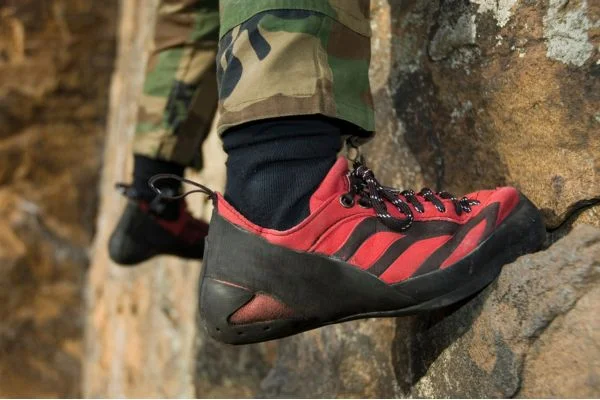Whether you’re an experienced climber or just getting started, having the right climbing shoes is essential for your safety and performance. But with so many options available, how do you know which shoes best fit you? One of the most important things to consider when shopping for climbing shoes is ensuring they fit correctly. So let’s take a look at what you need to know.
Size Matters
The first step in making sure your climbing shoes are a good fit is getting an accurate size measurement. Your feet swell throughout the day, so it’s best to measure them at the end of the day. When measuring, wear thick socks like wool socks that will simulate what your feet will feel like while wearing climbing shoes.
The size measurement should be taken from both feet and rounded up if needed; this way, you can ensure that your toes don’t touch the ends of your climbing shoes when standing up straight. It’s also important to remember that different brands have their sizing charts, so check those before finalizing your purchase.
Related Blog: Do Climbing Shoes Stretch In Length?
Choose Between Comfort and Performance

When choosing between comfort and performance, there is no one-size-fits-all solution. Everyone’s feet are different, so what works for someone else might not work for you. In general, if you want a more comfortable option, look for shoes with more padding or an extra layer of rubber around the toe box and heel area.
If you prioritize performance over comfort, choose a model with less padding and an aggressive downturned sole that allows maximum edging power while providing enough flexibility when needed. It’s also important to consider the type of terrain you’ll be taking on to ensure the shoe fits your needs as well as possible.
Think About Your Foot Shape
Another factor that often gets overlooked when choosing climbing shoes is foot shape. Different brands offer different lasts (the shape of the inside of a shoe), which can affect how they fit on your feet—so pay attention!
If you have wider feet or higher arches, look for models that offer more room in those areas; if you have narrow feet or lower arches, go for something with more arch support and less wiggle room in the toe box area. Again, knowing your foot shape will help ensure that regardless of which brand or style you choose, it will fit perfectly without being too loose or tight in any area.
Also read our blog How Tight Should Climbing Shoes Be? to pick the right pair of climbing shoes.
Go For Quality
Finally, don’t forget that quality matters when choosing the right climbing shoes! Investing in a quality pair will ensure that they last longer and perform better than cheaper alternatives. Also, look for features like rubber soles with non-slip treads and reinforced toe boxes for maximum comfort and protection while scaling walls or rocks outdoors.
Additionally, some brands offer unique features such as adjustable straps that allow you to customize the fit even further—which is especially helpful if you have wide or narrow feet!
Related Blog: How Long Do Climbing Shoes Last?
Break In Time
Once you have purchased your perfect pair of climbing shoes, it’s essential to keep in mind that they will need some time to break in before they feel truly comfortable on your feet. This can take hours to weeks, depending on the type of leather used and how often you wear them.
Leather tends to stretch over time, so make sure you don’t buy something too small, as it won’t stretch enough! Instead, try wearing them around the house (without socks) until they start feeling like an extension of your foot – then take them out on the wall!
Conclusion:
Getting a perfect fit from your climbing shoes is essential for peak performance and safety while scaling walls or rocks outdoors—so make sure to spend some time researching before committing to a purchase! Start by taking accurate measurements at the end of each day while wearing thick socks; then try on several pairs until finding one that feels comfortable without causing any pain or discomfort in any areas (especially near the toes). Lastly, don’t forget about quality—investing in a quality pair will ensure that they last longer and perform better than cheaper alternatives! With these tips in mind, you’ll be ready for whatever outdoor adventures come next!

